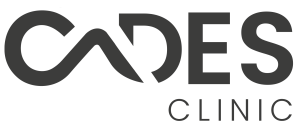Introduction
Liposuction is a highly effective procedure for removing stubborn pockets of fat, providing individuals with the body contour they desire when diet and exercise alone prove insufficient. This article will discuss the importance of exercise during liposuction recovery and when patients can safely return to the gym, taking into account the specific steps of liposuction recovery.
Can I do exercises after Liposuction?
After undergoing liposuction, it is essential for patients to be cautious about how and when they resume their regular exercise routine. It’s advised to adhere to specific guidelines provided by medical professionals. Light activities like walking immediately after the procedure can be beneficial, as they help minimize swelling and inflammation while reducing the risk of blood clots. However, strenuous exercise should be avoided for at least 4 – 6 weeks or until cleared by a plastic surgeon.
Is exercising after Liposuction necessary?
While liposuction effectively removes fat cells, patients must understand that maintaining the results involves more than just the procedure itself. Exercising and maintaining a healthy lifestyle are crucial for long-term success. Some patients may believe that liposuction alone is sufficient, but continuing to exercise helps sustain the body-contouring results achieved through the procedure. Neglecting exercise and leading an unhealthy lifestyle post-recovery can increase the risk of fat returning, often in less desirable areas of the body.
Which exercises can I do during Liposuction recovery?
Every patient’s response to surgery is unique. Listening to your body and practicing patience when reintroducing exercise are vital for a smoother liposuction recovery. Immediately following the procedure, light walking is recommended to enhance blood circulation, reduce the risk of blood clots, and aid in recovery. When restarting more strenuous activities, such as running or weightlifting, it’s generally best to wait 4 – 6 weeks post-surgery. Even then, aerobic and resistance training should be approached at a much lower intensity level, with a gradual buildup over several weeks.
It’s essential to keep in mind that recovery varies by patient, depending on the areas treated and individual factors. Common sense is key to achieving a balance between activity and exercise. Pushing oneself too soon and ignoring the body’s signals can complicate the liposuction recovery process. Patience is integral for healing, coupled with adequate rest. By adhering to these fundamental rules, following the surgeon’s guidance, and progressively reintroducing exercise, patients can regain their normal routines faster and more comfortably.
Am I a good candidate for Liposuction?
Those who are dealing with problematic areas like the upper arms, inner thighs, abdomen, lower back, flanks, or a “double chin” may consider liposuction for contouring assistance. Ideal candidates are healthy, non-smoking adults who have maintained a stable body weight. While liposuction removes unwanted fat cells, maintaining a healthy lifestyle, exercising after the recovery period, and staying at a stable weight are essential for long-term success in preserving the fantastic results achieved through the procedure.
Disclaimer: The content on this blog is intended for general informational purposes only. It is not a substitute for professional medical advice, diagnosis, or treatment. Always consult qualified healthcare providers for personalized advice. Information regarding plastic surgery, dental treatment, hair transplant, and other medical procedures is educational and not a guarantee of results. We do not assume liability for actions taken based on blog content. Medical knowledge evolves; verify information and consult professionals. External links do not imply endorsement. By using this blog, you agree to these terms.





